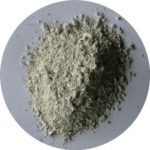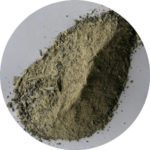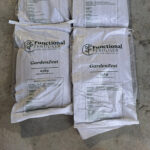PW Burton
The European Union has just refused to grant Monsanto a new license for Glyphosate. Whichever side of the debate you’re on, it signals the start of a fundamental change in agriculture worldwide.
Sufficient people worldwide have taken action (protests, petitions, and submissions), which will result in a seismic shift in farming practises. The desire by consumers to eat meat and vegetables grown from soils ‘uncontaminated’ by weedicides, pesticides, and heavy metal residues will continue to change the way food is produced.
However, for a significant number of NZ pastoral farmers the Glyphosate decision will change little of their present practices, as they already seldom use sprays designed to kill, weeds or pests.
These farmers work on the philosophy that ‘what grows is the result of the conditions created’, and manage their pastures to get the best performance and quality from them, on the basis that “if it’s eaten by an animal it’s not a weed.”
The first question asked by staff of this country’s largest farming organisation on a recent visit to one such farm was, “What’s the pasture renewal programme?” The answer was, “There isn’t one.”
The pasture they were standing in at the time had grown over twenty tonnes of dry matter in the previous twelve months, contained a wide variety of plants, and had not been renewed in the last fifty years.
New seed will have been sown at some time in that period, but it had never been sprayed out and regrassed. Pastures on the property contain a wide variety of species including chicory, plantain paspalum, and cocksfoot. The dominant grass is high fertility rye, particularly over autumn and winter, with large leafed long stemmed clover present throughout the year.
The soil nutrient programme is based on the requirements for clover, and only a single application of less than 20kgN/ha is applied each year in autumn to boost ryegrass growth as the soil cools.
Clover contains three to four times the amount of calcium of grasses, and for clover to thrive in a sward a long strong stem is required. Calcium provides the strength for clover to access sufficient sunlight to fix the necessary nitrogen.
The extra pasture grown in late spring and summer allows the making of high quality hay from the genuine surplus. This easily covers the fact that, without regular nitrogen applications, in 2008/09 measured pasture production, compared with a conventional N nutrient programme farm, showed 17% less total growth in August/ October, but 74% more in November/January.
Total pasture growth for that season was 25% higher on the property using a CalciZest/DoloZest total nutrient programme.
In the intervening 7 years the gap between the two farms has steadily widened, as the low N input property has sequestered carbon, developed humus, and further increased total pasture production.
The coming changes are driven by a fundamental shift in attitude away from battling the elements, fighting pests and diseases, animal ill-health, and environmental regulations, to one of unhurried relaxed observation, with an appreciation that the only option long-term is working with rather than against natural forces.
The change from a conventional nitrogen fertiliser dependent system to a sustainable regenerative one is remarkably easy to implement, and can be instigated this coming spring with no overall reduction in growth or production. For more information call Peter on 0800 843 809




